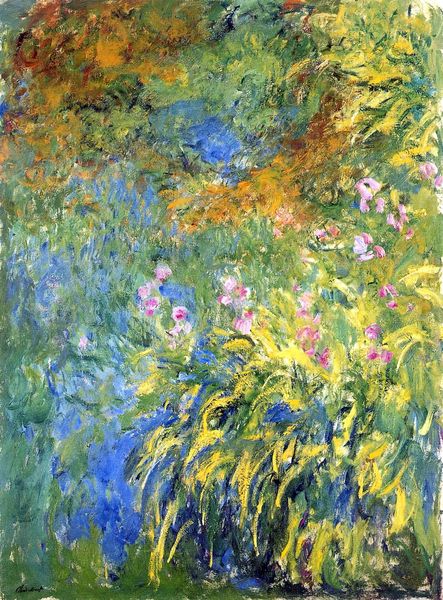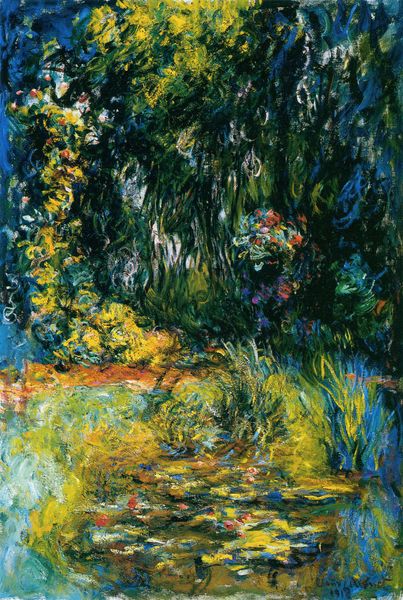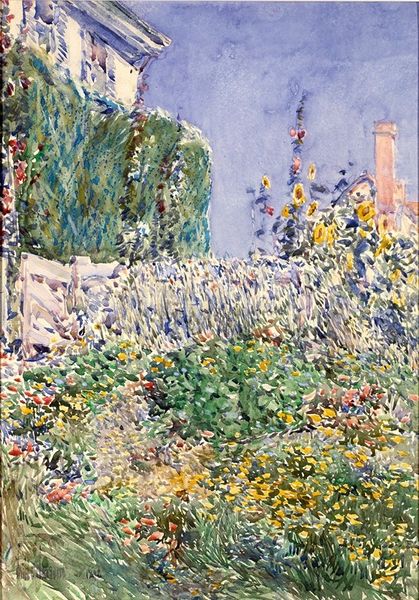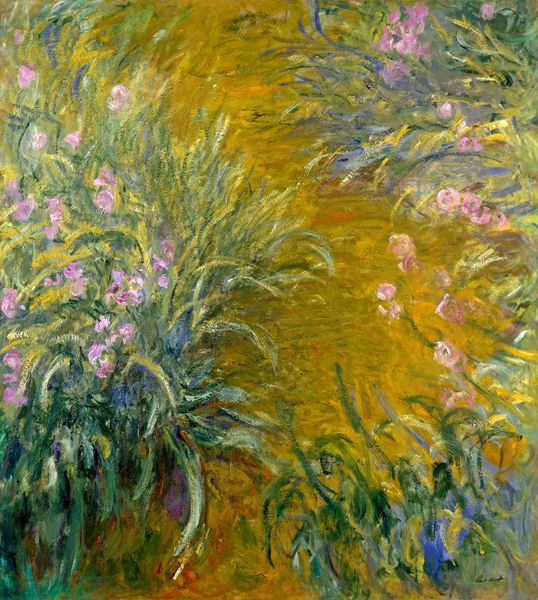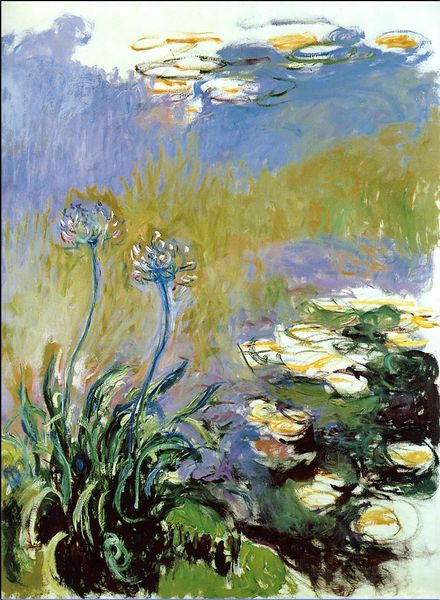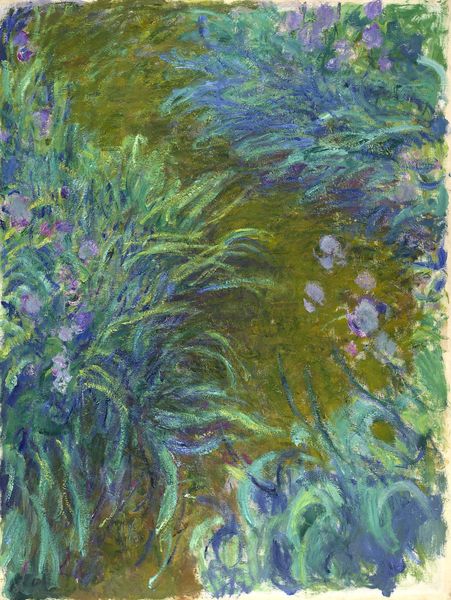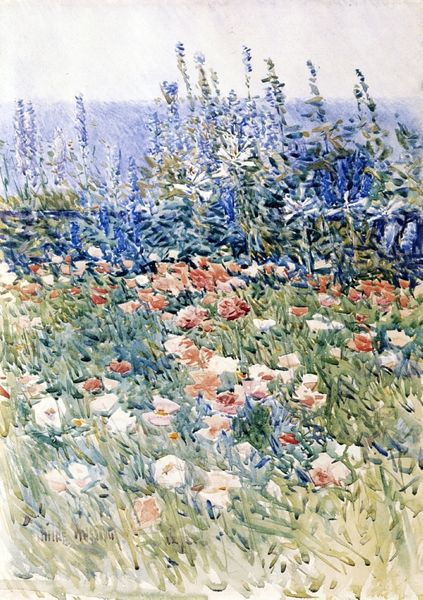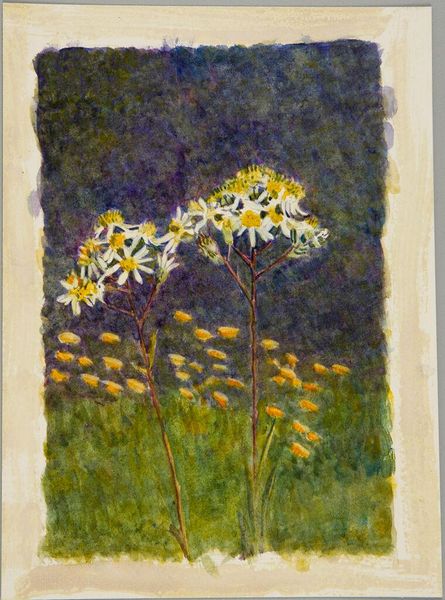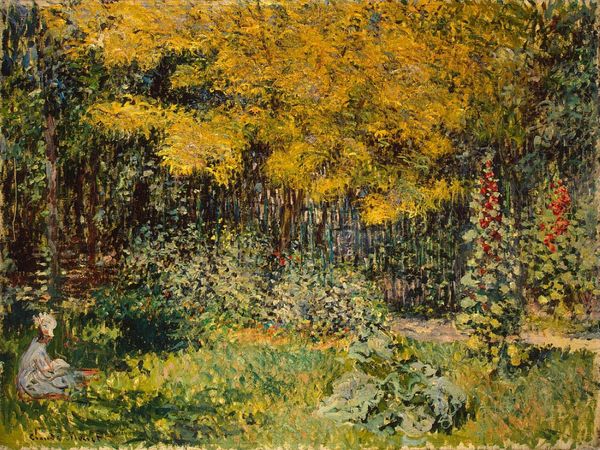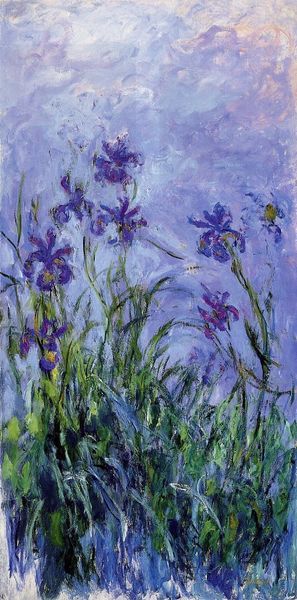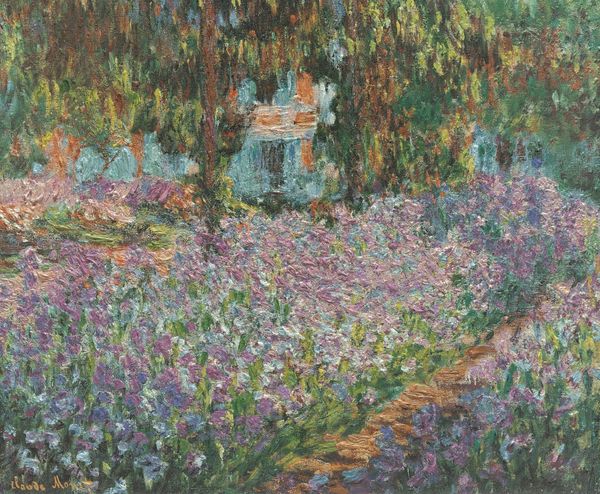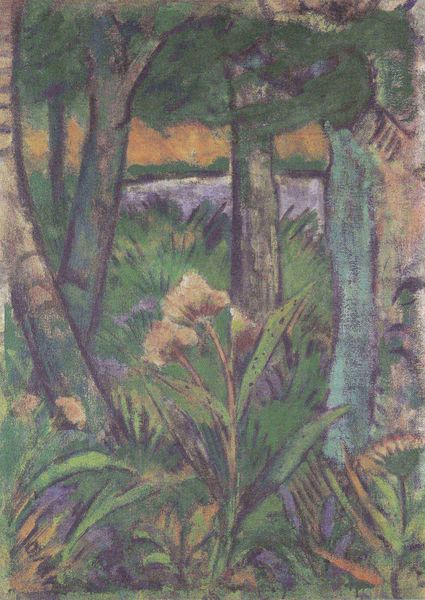
Copyright: Public domain
Curator: Up next is "Flower Garden," a watercolor painted in 1916 by Childe Hassam. Editor: A bit chaotic, isn’t it? An explosion of forms but somehow very calming at the same time. Curator: Hassam was deeply engaged with Impressionism, as evidenced in the optical blending of colours and emphasis on capturing fleeting moments in outdoor settings, the hallmark of the plein-air method. Consider how that watercolor, typically used for sketches or studies, becomes a final artwork here. Editor: You're right; the immediacy of the medium definitely lends itself to capturing a certain… effervescence. Looking at the brushstrokes, it's easy to trace Hassam's movements, the quick decisions inherent in watercolor. But beyond the visible gesture, there's a calculated compositional structure. Notice how the lighter colours in the foreground are contrasted against darker shades toward the back. Curator: Precisely! And this wasn't just about aesthetics; Impressionists like Hassam were also reflecting broader societal shifts. The rise of leisure, the burgeoning middle class… these gardens, accessible to more people, became sites of both production and pleasure. Gardening as labor versus gardening as recreation. Editor: That is clear, but thinking of forms, these loosely defined shapes, they only cohere into flowers and foliage when viewed from a certain distance. Up close, it's all abstract daubs, playing with the idea of perception. The eye constantly restructures the details on this watercolour surface. Curator: Consider then, that watercolors have historically been associated with amateur artistry. Hassam elevates it by engaging in painterly virtuosity—pushing the boundaries of a quotidian material to elicit nuanced and complex feelings. He’s playing into anxieties of a class that historically consumed this particular painting media. Editor: A brilliant synthesis! High art meets the supposedly disposable, captured in a garden teeming with symbolic, semiotic possibilities, don't you think? Curator: It’s not without the laboring class making it so! With that, perhaps we should leave our listeners to wander this little garden with these details in mind.
Comments
No comments
Be the first to comment and join the conversation on the ultimate creative platform.
